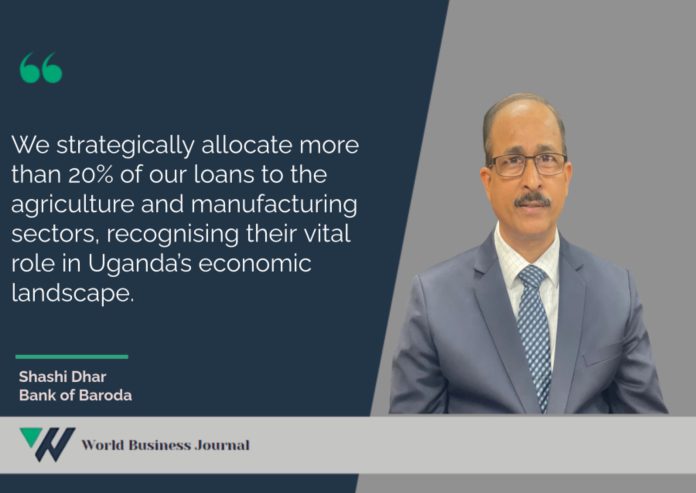Bank of Baroda Boosts Funding for Critical Industries
World Business Journal talks to Shashi Dhar, Managing Director of Bank of Baroda, about the bank’s loan book composition and strategic priorities, recent amendments to the Financial Institutions Act, and the critical need to balance regulatory compliance with sustainable economic growth.
How has the loan portfolio of the Bank of Baroda evolved, and which sectors have seen increased funding?
Our loan book has shown substantial expansion, increasing from UGX 1,111.89B in December 2022 to UGX 1,258B by December 2023, and further to UGX 1,370B by September 2024. Currently, our portfolio stands at UGX 1,450B.
We strategically allocate more than 20% of our loans to the agriculture and manufacturing sectors, recognising their vital role in Uganda’s economic landscape. Notably, we played a pivotal role by financing 25% of the $123M acquisition of Hima Cement in Uganda by the East African Sarrai Group. This acquisition, previously owned by Cementia Holding AG Zurich and Bamburi Cement Plc, ensures that profits remain within Uganda, thereby contributing to the nation’s development.
What is your view on the new requirements outlined in the amendments to the Financial Institutions Act?
In response to amendments to the Financial Institutions Act effective May 9, 2024, key changes require all board committees’ recommendations to receive full board approval, enhancing oversight but extending approval times. Credit approvals, in particular, have extended from 15-20 days to approximately 6 weeks, impacting project timelines.
As a bank committed to efficiency, we have expressed these concerns to the Uganda Bankers Association and the Bank of Uganda. High-level discussions are underway to streamline the approval process to balance regulatory demands with economic progress, ensuring that projects are not hindered by procedural delays.
What solutions can improve SMEs’ access to low-interest loans and affordable financing?
High interest rates are primarily driven by the government’s borrowing costs. To reduce these rates, the government must seek alternative funding sources and trim unnecessary expenditures. In Uganda, the anticipated oil production by 2025 could save $300-400M on petroleum expenses, thereby decreasing borrowing needs and potentially lowering interest rates.
The ongoing Rationalisation of Government Agencies and Public Expenditure (RAPEX) is another positive initiative aimed at cutting costs and reducing borrowing over time. While these effects may take time to materialise, such measures point toward a gradual decrease in expenditures and, consequently, lower interest rates.







